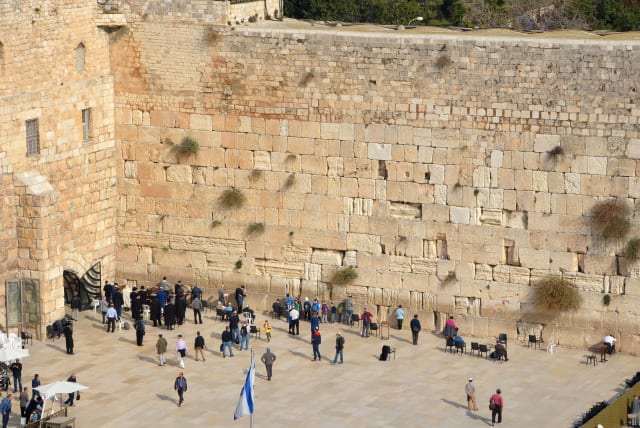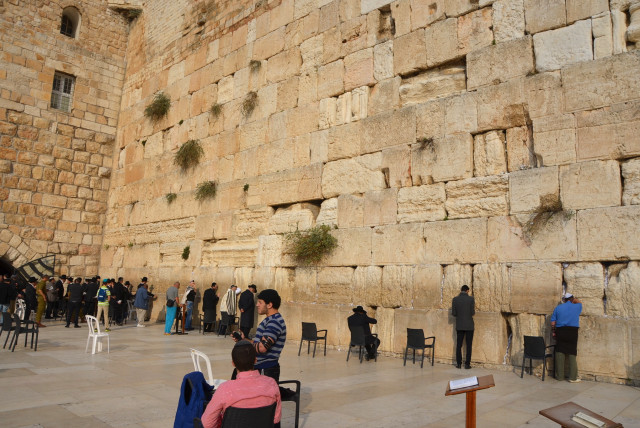Why is one of Judaism's holiest sites not accessible yet?

Despite decades of advocacy and significant donations, the bureaucratic hurdles have prevented the realization of a simple solution to make this holy site accessible to all.
The accessibility of the Western Wall in Jerusalem has been a longstanding issue, with one Israeli-American businessman at the forefront of efforts to address it. Yet despite decades of advocacy and significant donations, the bureaucratic hurdles have prevented the realization of a simple solution to make this holy site accessible to all.
Israeli-American businessman Baruch Klein, 75, has faced a personal struggle each year to reach the Western Wall for the traditional Birkat Kohanim (priestly blessing) ceremony on Sukkot. His disability, stemming from a fall in a New York building in 1994, has made this journey challenging. Nevertheless, his determination to make the Western Wall accessible for all visitors has not waned.
Klein's determination remains unshaken.
“It’s inconceivable that at the holiest and most visited site in Israel, there is no elevator or escalator to accommodate thousands of visitors every day,” Klein said. “Why should I take a long and exhausting route or give up praying at the Kotel [Western Wall]?”
Klein is not alone in these challenges. During Sukkot, thousands of visitors, including elderly, disabled, and young parents with strollers, make their way to the Western Wall. Unfortunately, many struggle to access the site due to the lack of proper infrastructure, narrow streets, and bumpy sidewalks.
The fight for disability rights
Klein spoke to The Jerusalem Post about his advocacy, which began in the late 1990s when he purchased a home in the Jewish Quarter. He noticed the absence of an elevator or escalator connecting the Jewish Quarter to the Western Wall Plaza, which posed significant challenges for accessibility. He embarked on a mission to change things.
Over the years, Klein met with various dignitaries, including former Jerusalem mayor Ehud Olmert, engineers, city officials, MKs, and cabinet ministers, in a bid to influence change. He said he even enlisted the help of an engineer who had worked on escalators in Hong Kong to prepare a plan. Klein said he donated $4 million to support this initiative.
“The process halted after I was asked by a senior city official, who was later convicted of crimes, to deposit a million dollars in the city’s bank account for a maintenance fund for ‘ongoing repairs.’”
Klein was born in Hungary in 1948 to Holocaust survivor parents. Three of their children perished. His family immigrated to Israel when he was one year old. Although he learned at a yeshiva, he enlisted in an IDF combat unit and fought on the Golan Heights against the Syrians during the Six Day War.
In 1970, he moved to the US with his family and made his fortune in women’s religious clothing businesses. He moved to the Old City in the late ’90s.In an upcoming book detailing his efforts, Klein and others cite Israeli bureaucracy as being a significant hindrance to progress. Despite a government decision on the matter in 2017, which allocated a budget of NIS 50 million in 2017-2019 for the project, the work has been slow, with completion not expected for at least another two years.
“I come to Israel twice a year,” Klein told the Post. “Then I try to inquire, meet [with officials], and make a difference. Unfortunately, things are progressing very slowly. Twenty years ago, I started as a regular citizen, dealing with this issue, and the Kotel is still inaccessible to people with disabilities, the elderly, and parents with strollers. It’s frustrating, but I’m not giving up.”
The situation was even more frustrating given recent archaeological discoveries, he said, adding that during excavations for the project, a water source was found that stretches from the southern part of Jerusalem to the Temple Mount.In response, Jewish Quarter Reconstruction and Development Company CEO Herzl Ben-Ari said: “Unfortunately, the details that have been mentioned in the article are not accurate.”The draft proposal was submitted by the Jewish Quarter Reconstruction and Development Company, he said, adding: “We managed to secure budgets from government ministries and from private entities. The location of the elevator lies within a historical channel full of archaeology, and we are progressing alongside a significant challenge... There’s no bureaucracy in this situation that doesn’t exist anywhere else.”Due to the excavations, important historical findings were discovered, Ben-Ari said.“I believe that together with the Antiquities Authority, we can find solutions to these complex situations, move past the excavation stage, and proceed with the work,” he said.“Thank God, there’s no way that a Jew who wants to visit the Kotel won’t be able to. There are slightly more complex solutions,” Ben-Ari said. “Once the elevator construction is completed, accessibility will be much easier and simpler for everyone.”
Jerusalem Post Store
`; document.getElementById("linkPremium").innerHTML = cont; var divWithLink = document.getElementById("premium-link"); if (divWithLink !== null && divWithLink !== 'undefined') { divWithLink.style.border = "solid 1px #cb0f3e"; divWithLink.style.textAlign = "center"; divWithLink.style.marginBottom = "15px"; divWithLink.style.marginTop = "15px"; divWithLink.style.width = "100%"; divWithLink.style.backgroundColor = "#122952"; divWithLink.style.color = "#ffffff"; divWithLink.style.lineHeight = "1.5"; } } (function (v, i) { });

